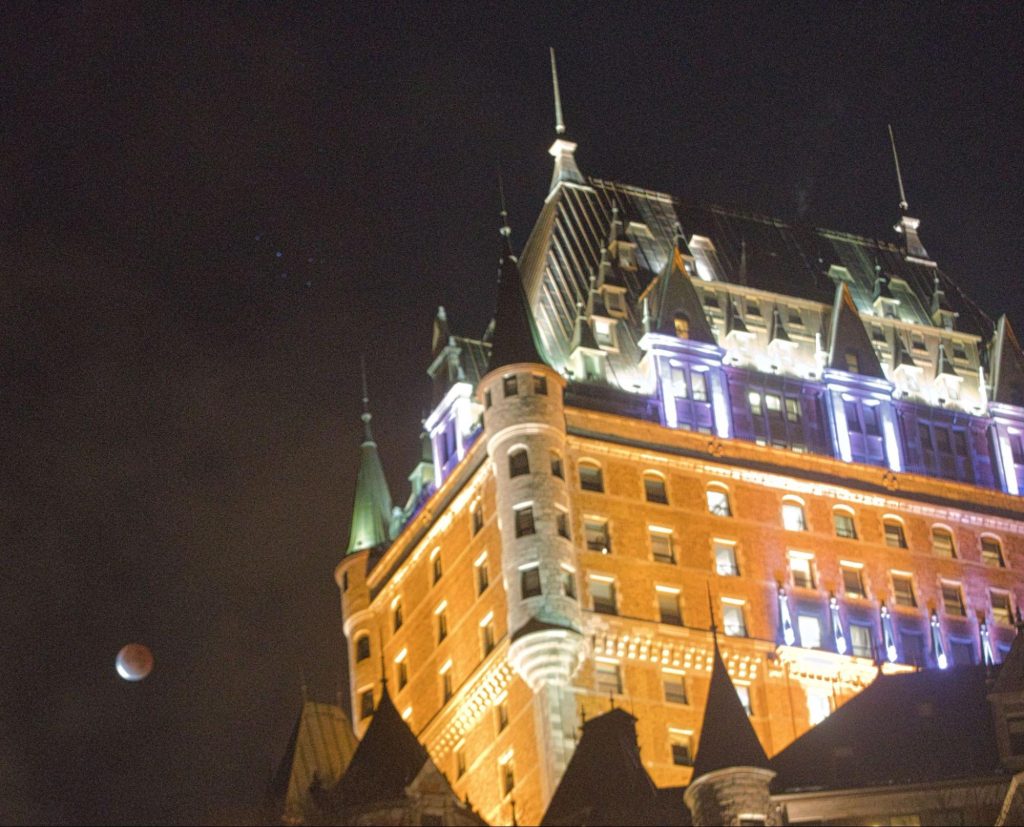Cassandra Kerwin
cassandra@qctonline.com
Despite the overcast skies on the night of Nov. 18 and 19, Quebecers who rose from their deep slumber were surprised to see the longest lunar eclipse since 1440. Through thinning clouds, people observed Earth casting its shadow over the moon.
Stargazers in Oceania, Asia and parts of Europe saw a partial lunar eclipse for just under three and a half hours, while those in the Americas caught the full version, spanning six hours, starting at 1 a.m. EST, peaking at 4:03 a.m. EST and ending at 7 a.m. EST, according to space.com. This makes it the longest one in 580 years; that of 1440 was only 23 seconds longer. At maximum eclipse, Earth’s shadow covered 97 per cent of the moon, giving it a deep red hue.
Unfortunately, most Quebecers went to bed under a fully overcast sky and heavy freezing rain on Nov. 18, not expecting to see the eclipse. However, those who were awake observed this special natural phenomenon. The rain over Quebec City stopped around 1 a.m. and the skies began to clear two hours later, revealing the eclipsing moon.
Photographers had to be prepared, with fully charged batteries, and act quickly to capture this moment, because things move fast in the sky, even during the longest eclipse and especially on cloudy nights. The best moon shots are captured during the “blue hour” (just before sunrise and after sunset) when both landscape and the moon are equally lit allowing to capture their respective details, which is not when this eclipsing Beaver Moon occurred.
According to NASA, the next two total lunar eclipses will take place on May 16 and Nov. 8, 2022. The latter will be three hours and 40 minutes long. The next equally long partial lunar eclipse won’t happen until Feb. 8, 2669.

A lunar eclipse occurs when the moon passes through Earth’s shadow, unlike a solar eclipse when Earth passes through the moon’s shadow. Also unlike a solar eclipse, a lunar eclipse can be viewed with the naked eye.
The Farmer’s Almanac gives each full moon a specific name, inspired by Indigenous, Colonial American and European folklore. November’s full moon is called the Beaver Moon because it is the month when beavers prepare for winter. This was also the time First Nations people and early European settlers would set beaver traps to ensure a supply of warm furs for winter.

 In the early hours of Nov. 19, the longest lunar eclipse since the 15th century was viewable across much of the Americas and Europe. The Beaver Moon was captured here behind the dome of the post office building in Old Quebec. Photo by Cassandra Kerwin.
In the early hours of Nov. 19, the longest lunar eclipse since the 15th century was viewable across much of the Americas and Europe. The Beaver Moon was captured here behind the dome of the post office building in Old Quebec. Photo by Cassandra Kerwin.